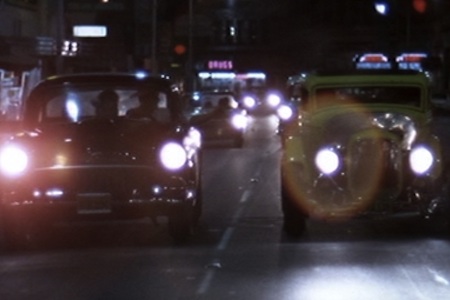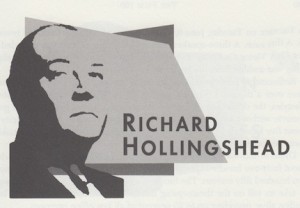Born: February 25, 1900, Camden, NJ
Died: May 13, 1975, Villanova, PA
During the 1950s, drive-ins truly did help keep the film industry afloat.
—Kerry Segrave
Fascination with open-air theaters goes back to Ebbets Field, in Brooklyn, New York, where Marcus Loew, to boost spirits dampened by World War I, put on a free exhibition of Wrath of the Gods (1914) for an audience of more than twenty-one thousand. The lesson of the event was overwhelming: Americans loved the great outdoors as much as they loved the movies.
The first to exploit this dual passion was Richard M. Hollingshead Jr. In 1930, while employed as manager of his father’s auto parts store, Hollingshead worked out several ways of mounting a Kodak projector to the hood of his car. He experimented in the front yard of his home, nailing a makeshift screen to a tree and placing speakers discreetly behind bushes to broadcast sound.
In his driveway, he tested the concept on his neighbors and noticed that cars parking behind his weren’t able to see the entire screen. He solved this problem by elevating the front wheels with wooden blocks to adjust the angle for optimum viewing. These wheel ramps became the basis for U.S. Patent 1,909,537, the first ever awarded for open-air theaters, on May 16, 1933.
Later that year, Hollingshead gathered $30,000 from a few investors and scouted a Camden, New Jersey site as the location for a revolutionary commercial venture. He broke ground on the first “drive-in” theater, and three weeks later, on Tuesday, June 6, 1933, he opened the gates to cars at twenty-five cents each. A three-speaker “directional sound” system was provided by the RCA Victor Company. Because light travels faster than sound, a slight delay was audible from the back row.
Refinements continued over the next several years, and by 1948 there were over a thousand drive-ins nationwide. Well suited to modest postwar lifestyles, the drive-in gave families a chance to pile into their car and go to a movie without any fuss. Because the average drive-in had a capacity of about five hundred cars, most were built outside metropolitan areas, making them perfect for leisure drives on weekend getaways.
Drive-in movies reached their height of popularity in the 1950s, when about forty-two hundred spread across the country, some boasting as many as two hundred fifty screens. The film industry was suffering as television began to take its toll on the theatergoing habit, but drive-ins flourished and kept studios alive, providing up to 25 percent of all box office revenues.
Popular teenage hangouts, drive-ins came under the scrutiny of fundamentalist Christians in the fifties. To counter their theaters’ reputation as teenage love dens, drive-in owners introduced bingo games, laundromats and beauty parlors—anything to support the family concept—but sex-crazed patrons remained the stereotype, and owners dropped the frills. Soon after, drive-in managers began booking B movies for an audience they felt was no longer paying attention to the screen.
Because they catered to fairly small communities, some theaters tried gimmicks to encourage audiences to travel a little farther than usual. The All-Weather Drive-In, on the outskirts of Copiague, New York, had both heated and air-conditioned indoor seating for twelve hundred, as well as twenty-five hundred parking spaces, plus a restaurant right on the premises. On the enormous twenty-eight-acre lot, patrons actually had to be shuttled from their car to the concession stand. In 1948, Ed Brown’s Fly-In Theater in Asbury Park, New Jersey, had enough room for twenty-five airplanes. Pilots could land at the theater; when the movie was over, a Jeep would taxi the planes back to an adjacent airfield and off they went, back home.
By 1962, competition from television had reduced the number of drive-in theaters to a mere fifteen hundred. Today (as of this writing, in 1998), fewer than nine hundred drive-ins exist, many of them doubling as huge flea markets during the day. This decline will eventually push Richard Hollingshead out of the ranks of cinema’s top influencers and back into the realm of forgotten pioneer. Still, Hollingshead’s idea became a unique movie phenomenon that lasted for many years, and his relentless pursuit made open-air movie theaters a permanent part of American culture.
To read all the republished articles from ‘The Film 100,’ as well as the complete list of 100 most influential people in the history of the movies, go to Reintroducing the Film 100 here on Keyframe.





